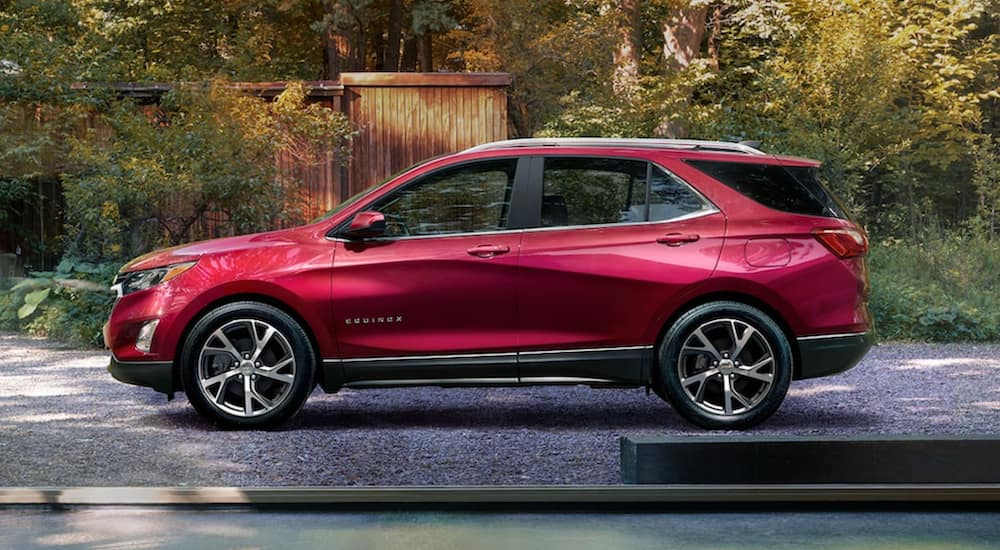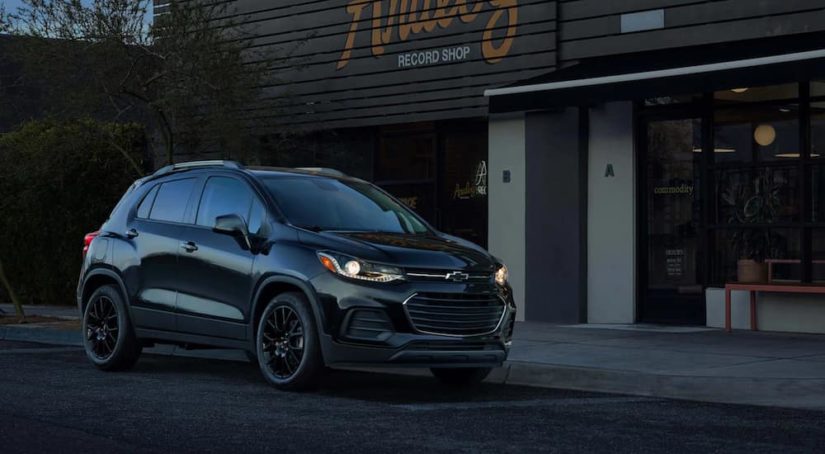Go take a look at any average parking lot, and you’ll quickly notice two things. Number one, cars are lasting longer than ever, as the average age of any random car parked will be at least 11 years old. Number two, you can’t throw a discarded Monster energy drink can in that lot without hitting a crossover. They seem to be everywhere. Those rounded shapes are on every corner, in every neighborhood of every income level. In this imaginary parking lot, you might see the lowliest Chevy Trax fender to fender with a Buick Avenir with about $32,000 dollars between them. If you’re lucky, you might find a crossover of yore, like an Isuzu Tracker or an early generation Honda CR-V. You may catch yourself wondering, what exactly is a crossover, and why are they so popular? When did they come to dominate the American road? Chevy crossover dealers everywhere have these types of vehicles stocked up in droves, so this question might be worth exploring.

At The Start
The basic idea of a crossover is that it is a vehicle that is based on a car platform with the body of an SUV on top of it. It’s got all the space and ride height of an SUV without the driving dynamics, running gear, or off-roading ability of a truck-based body on frame vehicle. It has the comfortable ride of a sedan with a taller ride height and more room inside. It is a vehicle built to fill all the roles an average driver will ever need. It’s a modern station wagon, and that’s exactly what the crossover started as.
In the 1970s, Subaru entered the American market with a small station wagon that offered full-time four-wheel drive. The Subaru Loyale, as it was known, wasn’t meant to be taken off the road. You wouldn’t find any rugged skid plates or bash bars on it. Instead, what you found was a small, comfortable little vehicle that offered great space (especially when compared to a sedan) and had four-wheel drive for added traction during moments when you needed to cross slippery roads, loose gravel, or snow. That’s it. That’s the genesis for the crossover in America.
What came next was the AMC Eagle, which was an AMC Hornet sedan or wagon jacked up with Jeep 4×4 running gear. The then-chairman of AMC Gerry Meyers took one look at the Eagle and asked, “What the hell is that?” That was yet another contender for the first crossover. It looked like a lifted sedan or wagon because that’s all it really was. It was the same idea as the Loyale. It offered more space than a regular sedan and could handle slightly rougher weather conditions than the regular variant. Coming from an ailing automaker like AMC, the Eagle was never going to be more than a cult classic, and the Loyale from Subaru has been overshadowed by less conventional offerings that were on the market at the same time, such as the Subaru BRAT.
As the ’70s gave way into the ’80s and ’90s, we saw cars like the Chrysler Town & Country minivan hit center stage and become the next generation family hauler. The minivan was such a hit it pushed the old station wagon further and further away from its intended market. It was slowly being replaced. However, as the ’90s wore on into the early 2000s, a strange thing happened. Like a phoenix rising from its ashes, we saw the station wagon come back in spirit, in the form of the first true crossovers. At the time, the minivan was seen as a joke. If you had a minivan, you were considered someone who had given up on any form of motoring pleasure. But if you owned an SUV, which were selling like hotcakes at the time thanks to cars like the Ford Explorer, you were seen as hip, cool, adventurous, and wealthy enough to afford a status symbol. (The sedan might as well have been automotive white noise unless you wanted an oddity like the Chevy Caprice-based Impala SS.)
However, status symbols were all these SUVs really were. Sure, cars like the Ford Explorer, Chevy Blazer, and Oldsmobile Bravada could be had as very capable off-roaders, seeing as they were based on truck chassis, but that’s not what most folks used them for. These giant, gas-gulping SUVs were being used to pick up groceries and kids from school, not blaze a trail across uncharted wildlands. Plus, they could be rather expensive. As the 2000s gave rise to the economic crisis and programs like cash for clunkers started to reap their heavy tolls, buyers were left with a dilemma. They needed a vehicle that could haul both people and cargo but didn’t need the rough riding rock crawling capability or the expense of a truck-based SUV. However, they still weren’t willing to go back to sedans and minivans.

Enter The Crossover
If you wouldn’t be caught dead in a minivan, and an SUV was too much car for you, the crossover was what you needed. It’s ironic that the modern incarnation of the station wagon would soon replace the minivan as the default family car. Automakers took the best ideas of a people-hauling minivan, the crushing steadfast normality of the family sedan, and the aesthetic of rugged dependability offered by the SUV and crammed it all into one vehicle. This amalgamation of automotive philosophies would soon become (second to the status symbol pickup truck) the most popular type of car driven in America today.
It’s easy to understand why. A crossover drives just like a slightly taller sedan, so it’s easy for any driver to understand. They can handle poor weather by offering all-wheel drive and give more options for hauling cargo when needed. They are a jack-of-all-trades car. It breaks down like this. If a crossover were a movie, it would be Forest Gump. If it were food, it would be a grilled cheese. A drink? A glass of ice water. You get the idea. Their target market is everyone. A crossover is made to appeal to people who want a nice, conservative car that takes no real risks and pushes no real boundaries. Like stationary nailed to a desk, there will be no envelope-pushing with this kind of car.
The drivetrains are meant to do just that, drive. The engine and transmission of a crossover are not likely to excite but remain as merely competent (although there are certainly exceptions to that rule). Like a sprig of parsley on a plate of food ordered from your local family restaurant chain, they are meant to be ignored. The styling of the modern crossover could best be described as “Corporate Chic.” They are supposed to look a little friendly, a little rugged, and a whole lot of inoffensive while giving the impression they somehow offer more in terms of driveability than they really do. A crossover is almost always a safe bet if a truck won’t do. Endlessly adaptable, they are the Everycar. Pick a brand, pick a size, and hit the road.
Just don’t lose it in a parking lot.



